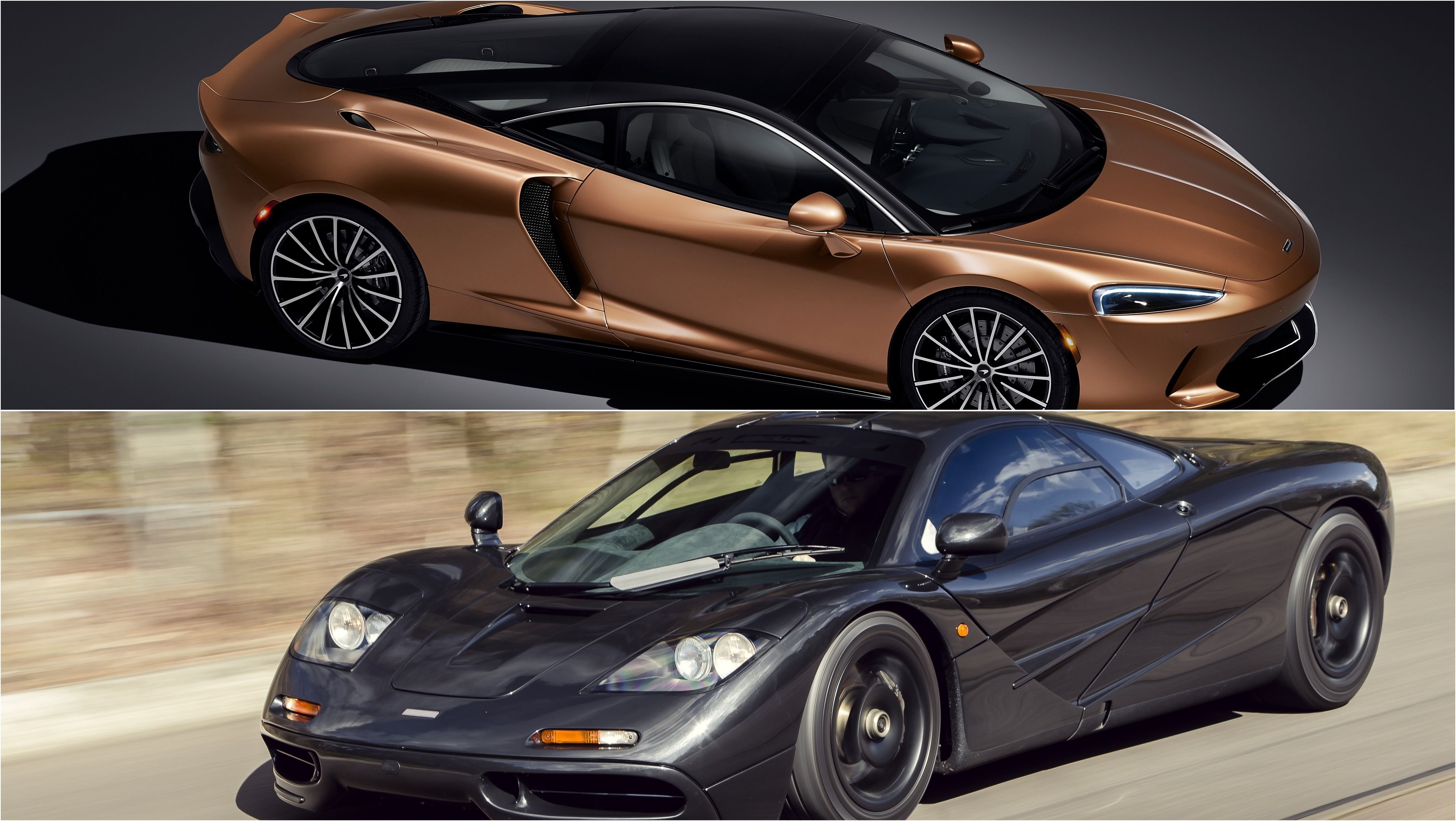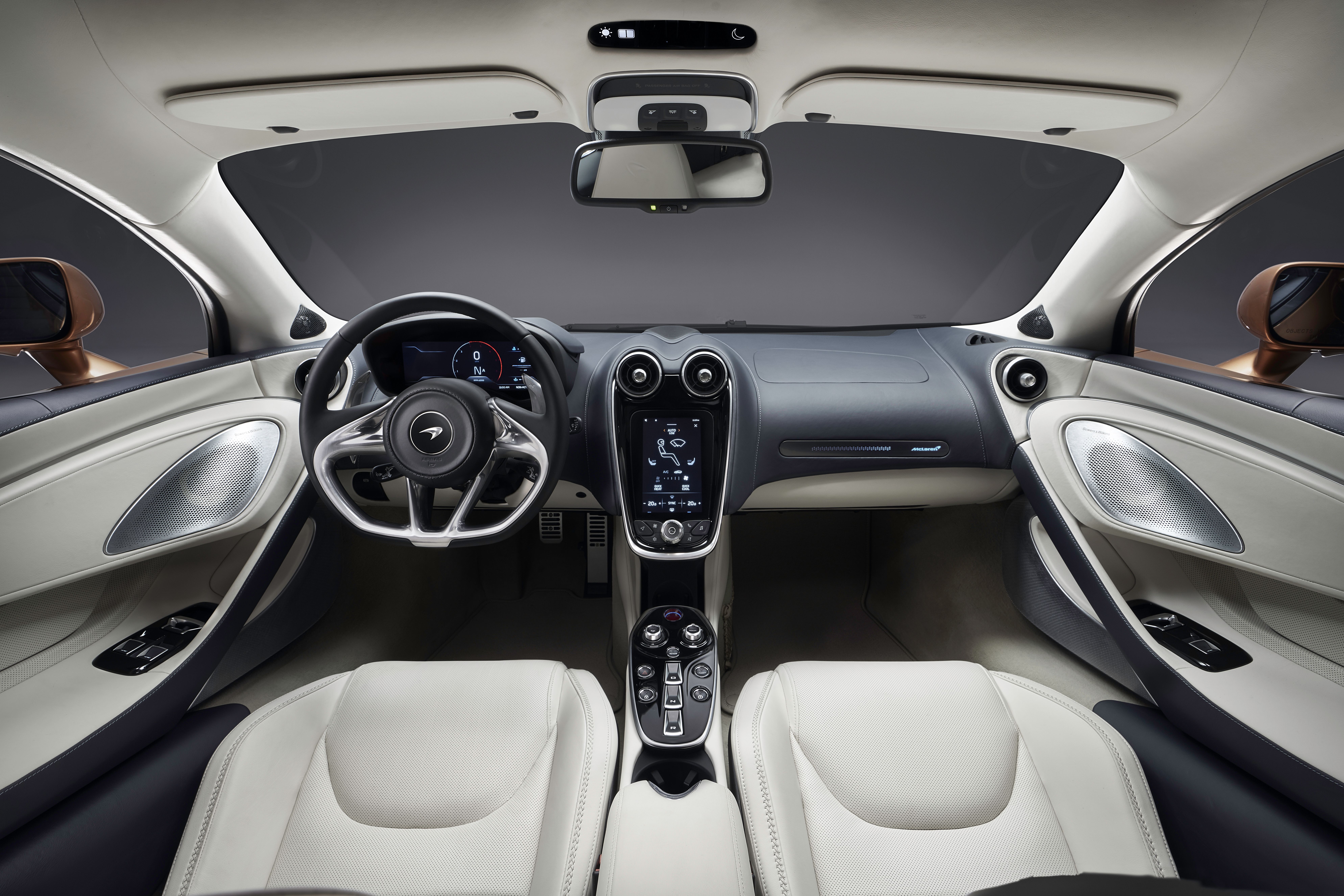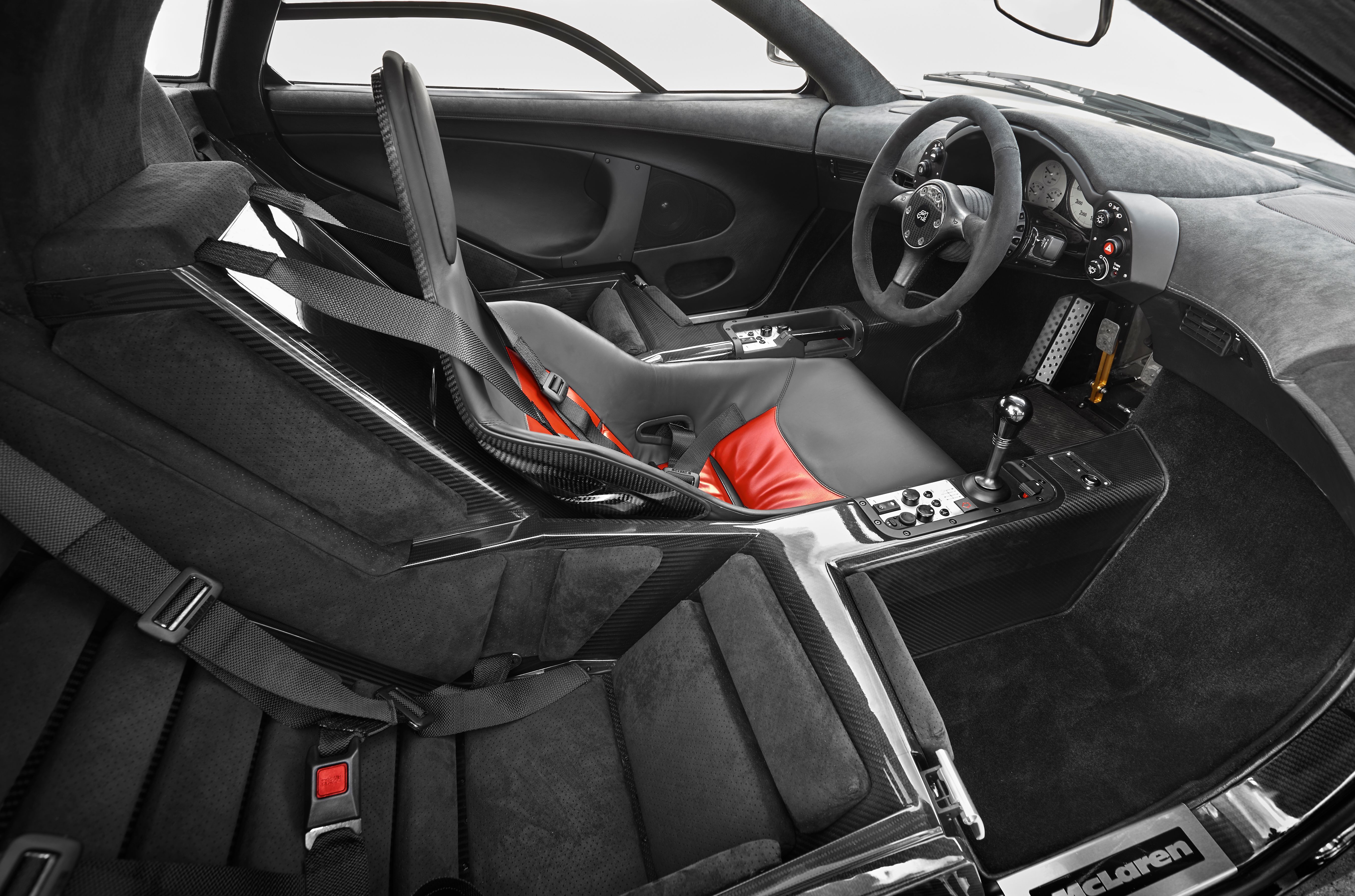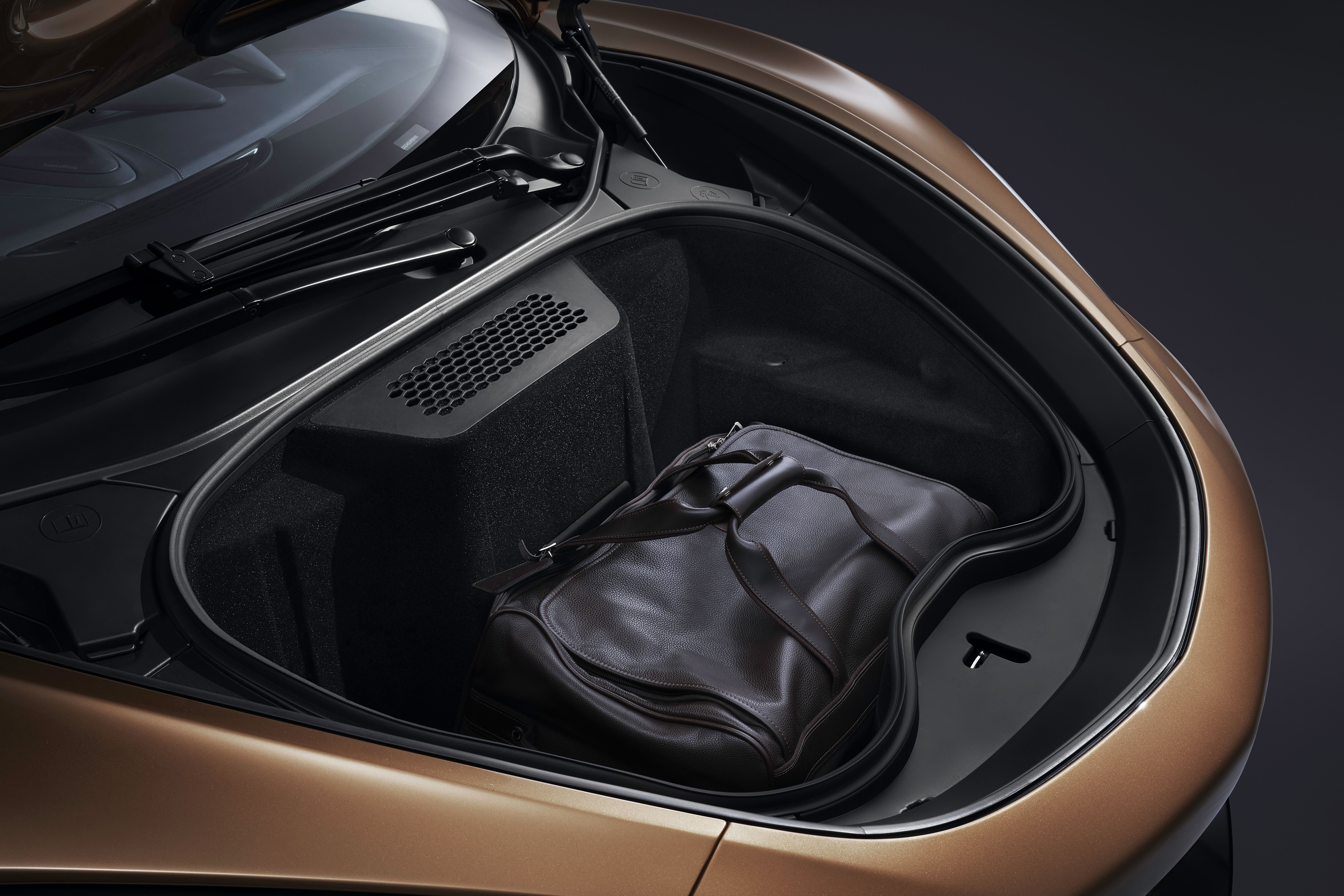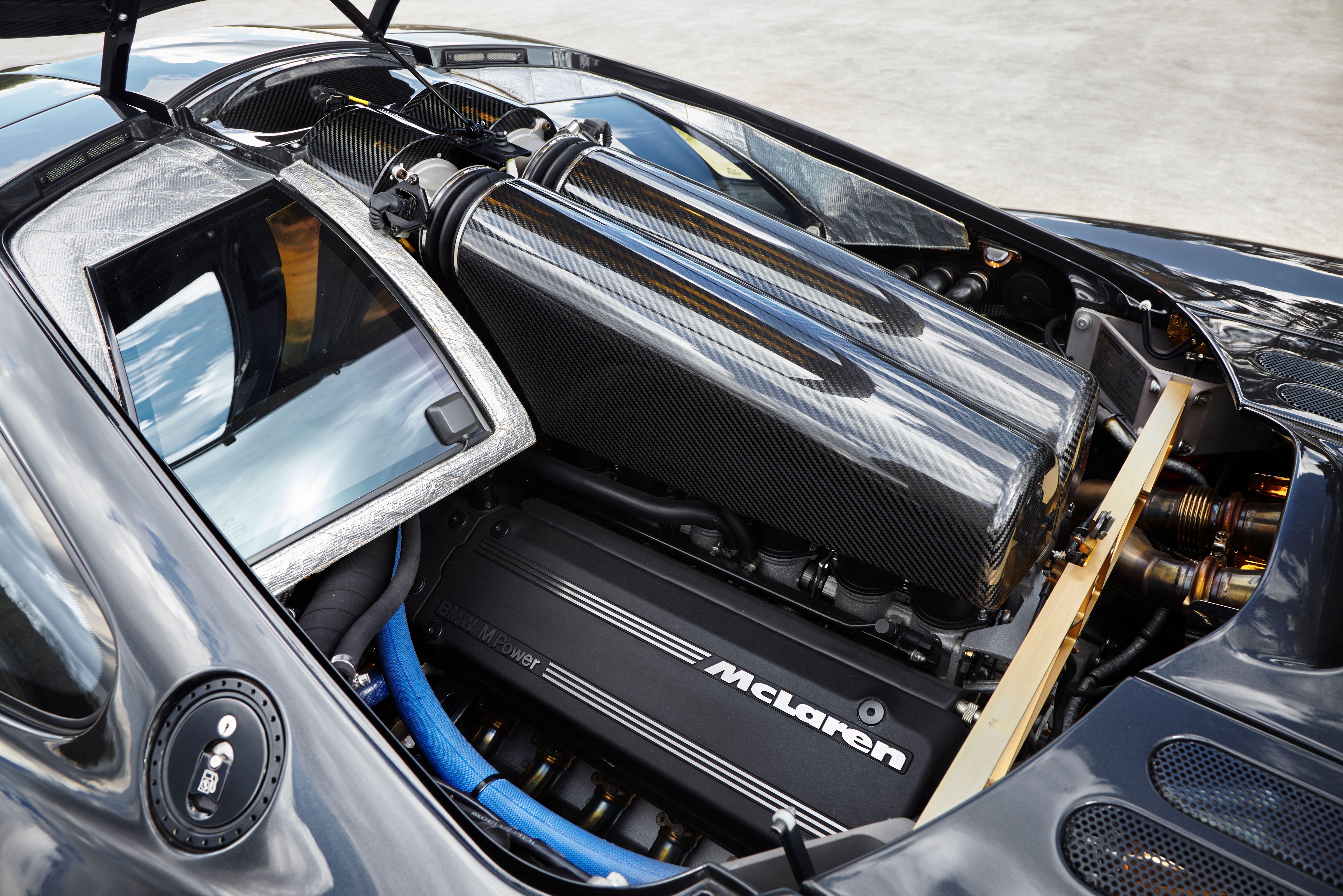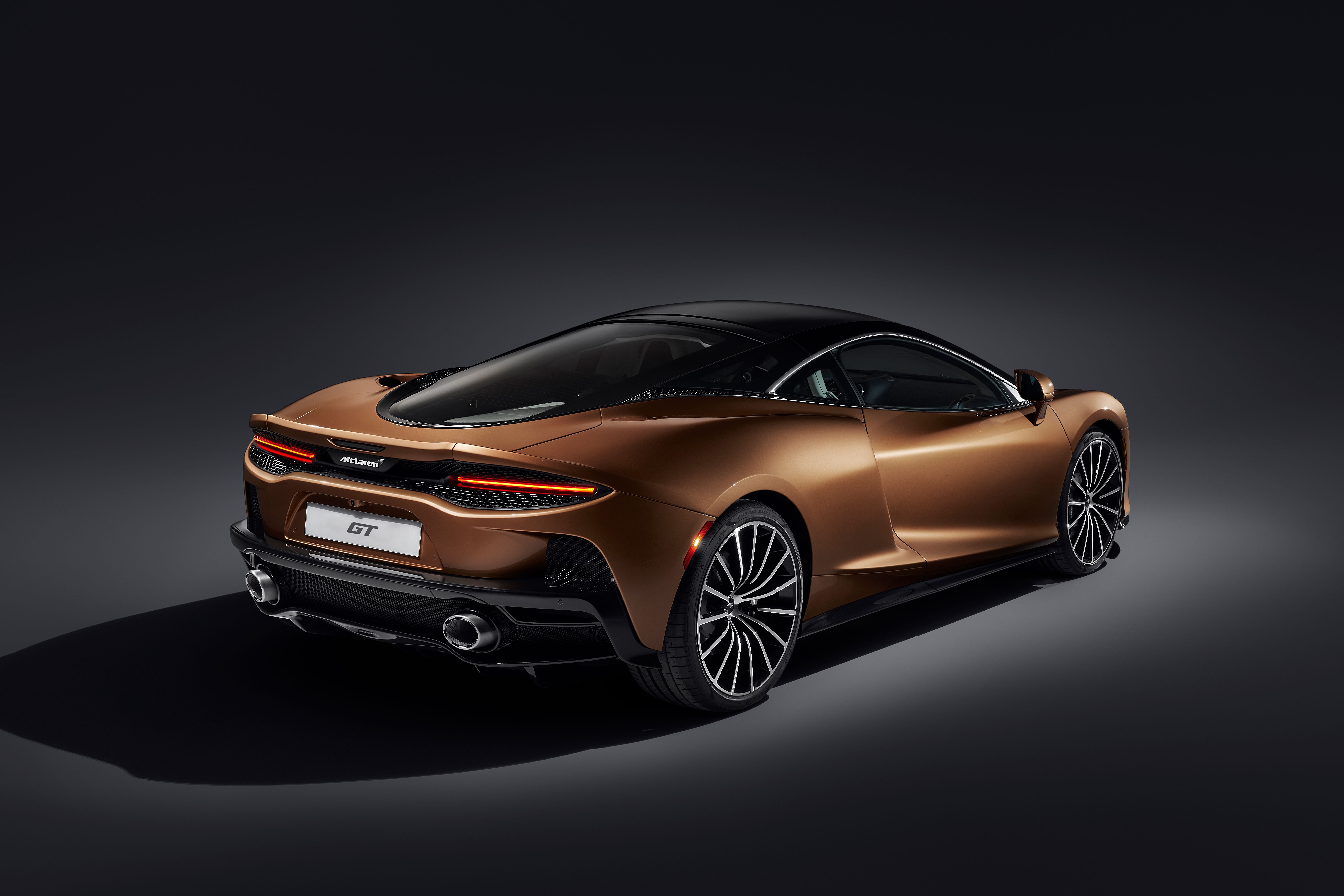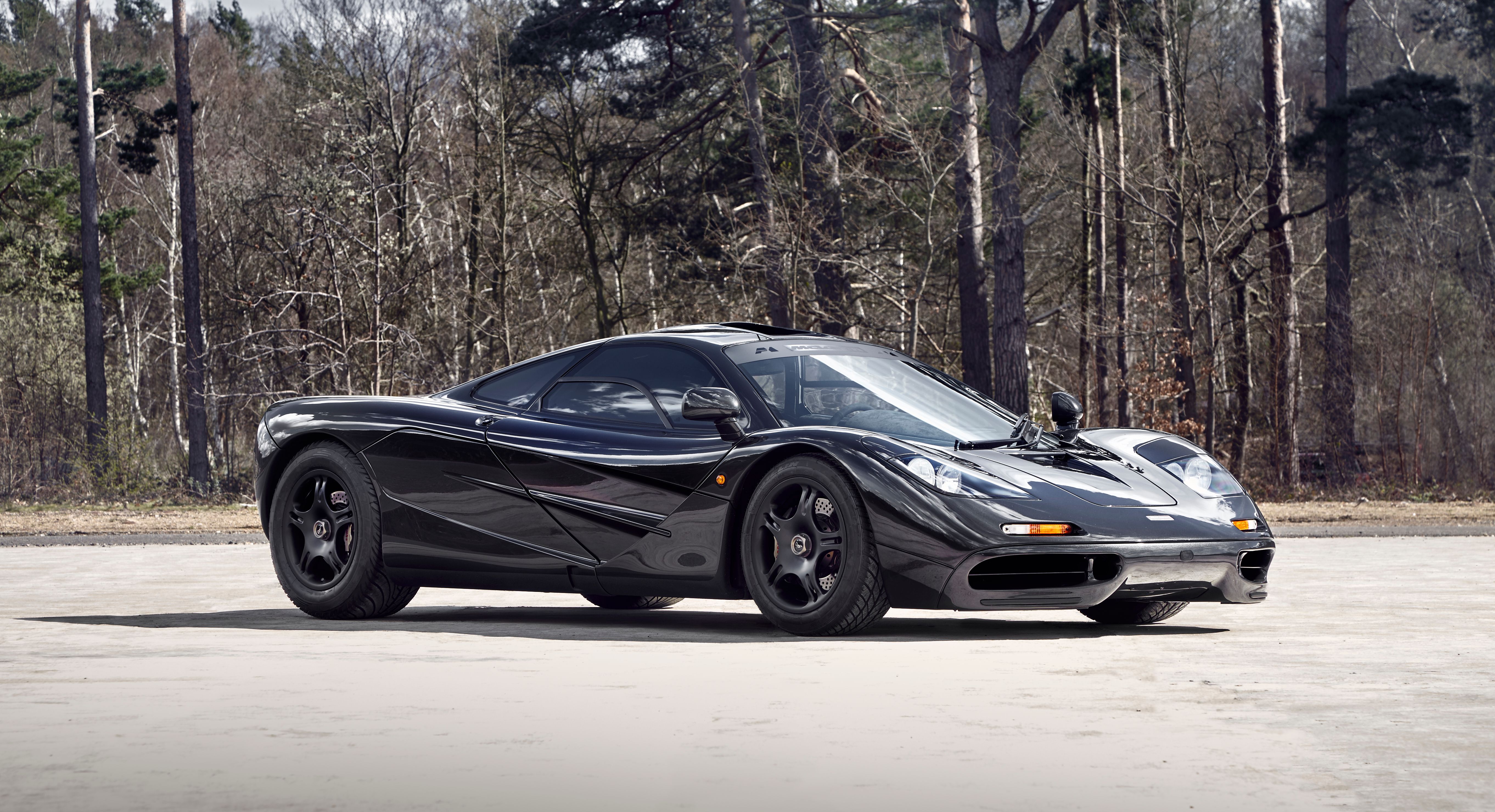McLaren just unveiled its most practical mid-engined sports car yet. It's called the GT, and it offers up to 20.1 cubic feet of luggage room combined. But the GT isn't McLaren's first practical vehicle. Although it's a spiritual successor to the 570GT, the GT is actually the third McLaren to feature a proper trunk. The first car to offer some practicality was the F1, McLaren's very first production car for road use. Let's find out more about that in the comparison below.
Design
|
|
ids=839711,839712 |
no_overlay=false |
before_label=2020 McLaren GT |
after_label=1993 McLaren F1> |
Launched in 1993, the McLaren F1 had a wild design for its era. Supercars with short noses and long rear decks weren't uncommon, but the F1 had a much more organic design than the competition. Early 1990s cars were still influenced by the angular designs of the 1980s, and the McLaren F1 came into the spotlight with a more rounded and muscular appearance. Its canopy-style cabin was also rare among supercars back then, so it made quite an impact when it hit dealerships.
Despite its organic design, the F1 looked as aggressive as a race car. And the proof of that is the fact that its race-spec counterpart, the F1 GTR, had only minor modifications to the bodywork. More than two decades later and the F1 still looks modern and remains a desirable car in terms of design.
|
|
ids=839276,839277 |
no_overlay=false |
before_label=2020 McLaren GT |
after_label=2019 McLaren 720S> |
The GT features a fresh design, and that's normal since it was unveiled 26 years after the F1. But unlike its predecessor, the GT borrows heavily from other vehicles. The F1 had the honor to be McLaren's first road-legal car and the only nameplate during its life-cycle, so it looks like nothing else. The GT, on the other hand, was designed within the company's current styling language, so it features cues already seen on cars like the 570S, 720S, and the Senna.
I'm not saying it doesn't look appealing, but it will remain in history as a more practical version of the 720S, despite McLaren's attempt to sell it like a stand-alone nameplate. The F1, on the other hand, will stand out as a unique vehicle until the end of time.
Interior Layout
It's inside the cabin where the two supercars differ greatly. Both are luxurious for their respective eras, and both include race-inspired designs. However, while the GT sports the traditional two-seat layout, the F1 has a three-seat configuration. Granted, the F1 wasn't the first production model to have three seats in the first row. Many American cars from the 1940s to the 1960s had this layout. But while these vehicles had front-row benches for three people, the F1 had a unique layout with the driver's seat in the center and two passenger seats on the sides; both placed a few inches toward the back.
Storage Room
The McLaren GT is the most practical car the British firm has built up until now. Although it's not the first mid-engined grand tourer with a trunk, it's among the very few that have a trunk atop the engine. This feature is shared only with the McLaren 570GT and the Porsche 718 Cayman. Due to the low placement of the 4.0-liter V-8 engine, the trunk has a total capacity of 14.8 cubic feet. That's seven cubic feet more than the 570GT and on par with many compact sedans.
Just like the 570GT and other mid-engined grand tourers before it, the GT also offers some room under the front hood. This space is smaller, though, and it can take only 5.3 cubic feet of luggage. Combined, the McLaren GT offers 20.1 cubic feet of luggage room, which is comparable to many midsize and even full-size sedans.
Is the F1 as practical as the GT? Not really, but this iconic supercar is more practical than other supercars from the era. Although it doesn't have a trunk in the rear or storage space in the front, the F1 boasts two storage compartments into the side skirts. Gordon Murray wanted the F1 to offer a race experience, but it also wanted the car to be somewhat practical. In the absence of conventional storage room behind or above the engine, Murray designed luggage compartments in the lower rear fenders.
Covered by seamless lids, these are similar to the storage compartments found in buses, which carry luggage under the floor. Yes, I know, it's not the kind of comparison you want to hear when talking about supercars, but buses and some trucks are the only vehicles that have similar "trunks." Obviously, these spaces aren't big. Each of them can carry up to four cubic feet of luggage, meaning that the F1's capacity amounts to only eight cubic feet. That's notably less than the McLaren GT, but it's better than nothing. What's more, these storage compartments are actually innovative features that we should see more often in production cars.
Performance
This is where the F1 and the GT split toward different paths. While the GT features McLaren's modern twin-turbo, 4.0-liter V-8 engine, the F1 has a naturally aspirated, 6.1-liter V-12 under its hood. Also, while the GT's engine is built in-house, the F1's V-12 was built by BMW Motorsport and based on the M70 engine found in the second-generation 7 Series and first-generation 8 Series.
Despite not having turbos or superchargers, the F1's V-12 is the most powerful of the two. The mill cranks out 627 horsepower and 480 pound-feet of torque, 15 horsepower and 25 pound-feet more than the GT's V-8. That's not a massive difference, but it speaks volumes of the F1 extreme performance back in the mid-1990s. Their transmissions are also different. While the modern GT features a seven-speed dual-clutch automatic, the F1 has a six-speed manual, so it's more of a drivers' car.
Performance-wise, the F1 is a tad slower than the GT. The old supercar needs 3.2 seconds to hit 60 mph, while the modern grand tourer reaches the same benchmark in 3.1 clicks. Again, the fact that the F1 is only a tenth-second slower than a car that 26 years younger is proof that Gordon Murray's design was pretty wild for 1993. While quicker to 60 mph, the GT is no match for the F1 when it comes to top speed. The latter set a new world record for production cars with a top speed of 240 mph in 1998, a benchmark that stood untouched until 2005. The GT's top speed is rated at "only" 203 mph.
McLaren GT vs. McLaren F1
|
Engine configuration |
4.0-litre twin-turbo V8 |
6.1-liter V-12 |
|---|---|---|
|
Power PS (bhp/kW) @ rpm |
612 HP @ 7,500 RPM |
627 HP @ 7,400 RPM |
|
Torque Nm (lb ft) @ rpm |
465 LB-FT @ 5,500-6,500 RPM |
479 LB-FT @ 5,600 RPM |
|
Transmission |
7 Speed+reverse SSG. Comfort, Sport and Track modes |
six-speed manual |
|
0-97km/h (0-60mph) |
3.1 seconds |
3.2 seconds |
|
Maximum speed |
326km/h (203mph) |
240 mph |
Final Words
The F1 and the GT are two completely different supercars, and each has their own place in the company's history. The F1 stands out through its innovative construction, innovative design, and tremendous top speed. While its storage compartments are also innovative for production cars, its luggage space isn't exactly practical. The GT has a milder design and isn't as fast as the F1. It also doesn't have the wild three-seat layout with the central driving position. But it offers notably more luggage room, and it even rivals a few big sedans in that department. Two cars that serve different purposes, but both are cool to have.
Further reading
Read our full review on the 2020 McLaren GT.
Read our full review on the 1993 McLaren F1.

